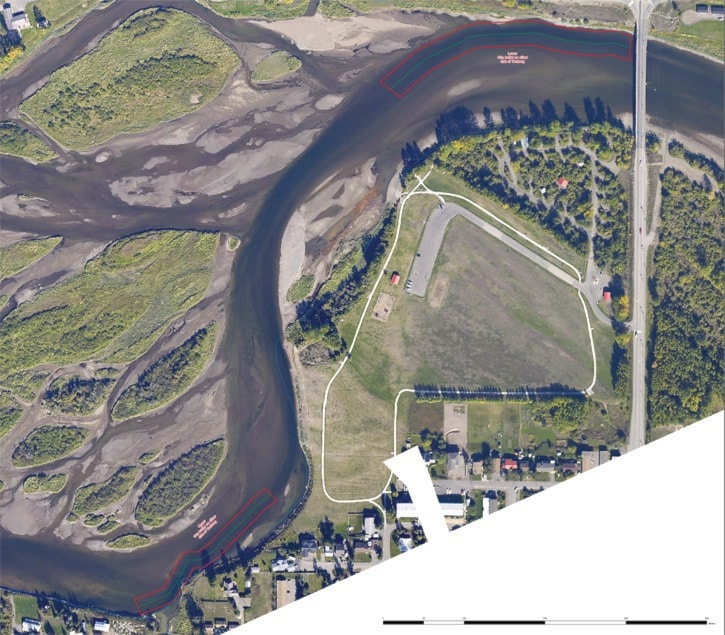A new sturgeon recovery project is expected to begin this week on the Nechako River.
The project aims to restore the spawning habitat of the endangered Nechako white sturgeon by placing new gravel pads on two areas of the Nechako River.
The idea came about after research by the Nechako White Sturgeon Initiative (NWSRI) and the Technical Working Group (TWG), revealed that sediment at the bottom of the river is likely to be the cause of sturgeon recruitment problems.
“One of the concerns is that there is a heavy sediment load on the bottom of the river and the sturgeon require a good gravel base to successfully have the eggs survive,” said Brian Frenkel, Chair of the NWSRI Community Working Group.
“It is believed that the sediment on the bottom may be attaching to the eggs, thus disabling their ability to survive,” he said.
In addition, fine sediments that fill in the gaps between the gravel, prevent the sturgeon larvae from being able to hide from predators.
“Placing clean gravel and rock is expected to shelter eggs and larvae from harm,” said Frenkel.
“A positive result will allow the recovery team to develop options for long-term restoration that could increase juvenile numbers substantially,” he said.
Two thousand one hundred m3 of a clean gravel rock mix will be placed in the deepest part of the river at the two spawning sites in Vanderhoof.
A barge has been brought in from Prince George to help with the placing of the gravel pads.
An excavator on top of the barge, will place the new gravel on the bottom of the river.
The two gravel pads, also know as ‘thalwegs’, will be approximately 30 metres wide; one will be located to the west of the Nechako Bridge and the other will be just east of Stoney Creek, by Fehrs Bridge.
The work is expected to start this week now that the ice has melted, and should be completed by May 14.
“We’re probably going to do the Stoney Creek site first, and then the second one which goes from the Burrard Street bridge, west to Murray Creek,” said Frenkel.
Signage will be erected at the boat launch area and in the river to warn people of the work zone.
“We can’t keep people away from the areas but people will be aware when they are going into the work zone so we would ask them to please stay away from the barge,” said Frenkel.
Constant environmental monitoring will take place during the gravel placement to ensure there’s no fuel leakage or excess sediment going through the system. Once the gravel has been placed and spawning begins, biological monitoring will take place over a period of two months and will involve: adult capture, tagging and egg collection, radio telemetry, spawn monitoring, monitoring of egg and larval incubation and monitoring production or larvae, as well as monitoring sediment accumulation and gravel movement.
This latest sturgeon recovery project is the largest effort so far in the numerous initiatives undertaken by the NWSRI and the TWG.
“As a research project it’s one of the largest of its kind, especially with gravel - it’s really exciting,” said Frenkel.
The Nechako white sturgeon are federally listed as an endangered species and the number of mature sturgeon of breeding age is estimated to be less than 350 presently.
